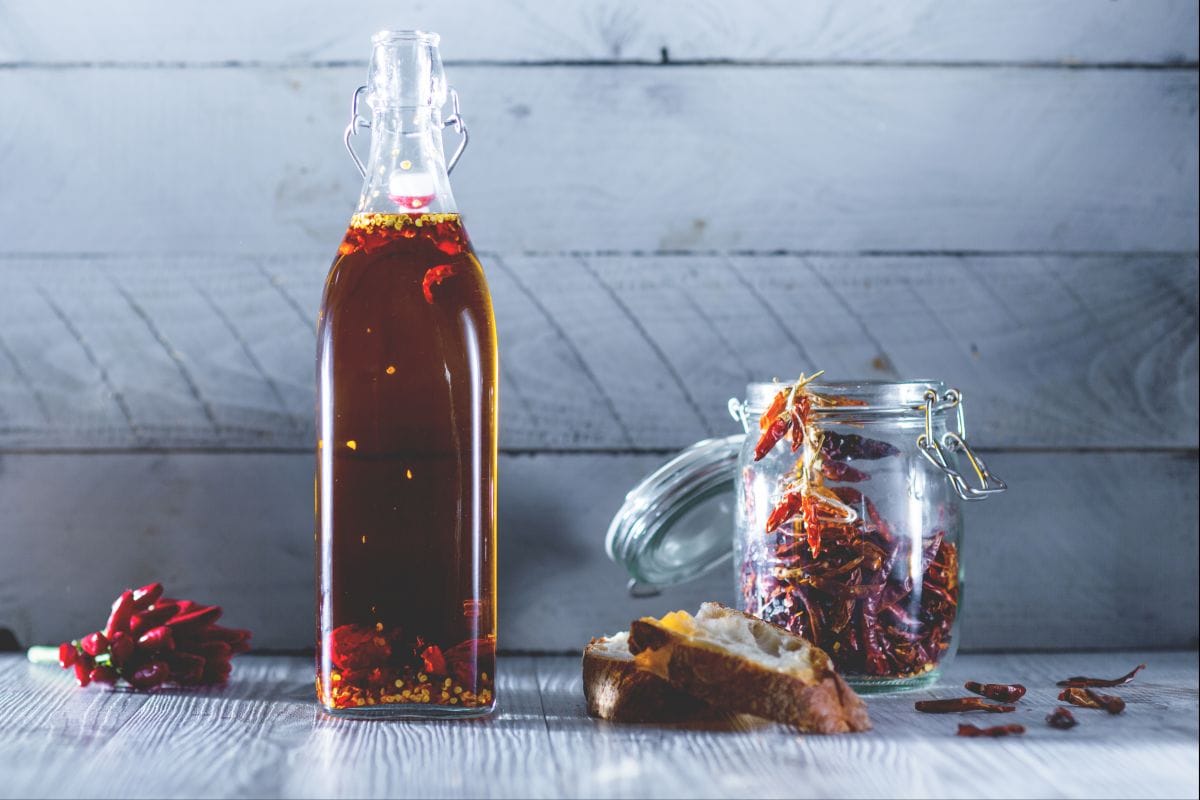Peppers in Oil
- Average
- 30 min

Do you want to add a kick to a salad, a pasta dish, or even pizza? Chili oil is a powerful ally for all those who love to add a spicy note to their dishes, giving a burst of flavor even to the simplest foods. Making chili oil is very easy, and you can use it both as a seasoning and to marinate meat or fish before grilling. And if you want to test your taste buds, you can also try it pure by drizzling a bit (sparingly!) on a slice of toasted bread: you won't be able to do without it anymore!

To prepare chili oil, start by sanitizing the bottles, as indicated in the guidelines from the Ministry of Health at the bottom of the recipe, making sure to remove any metal parts and rubber gaskets before boiling the bottles. Once you have completed this operation, put on a pair of gloves and take the dried chili peppers: remove the stem 1 and crumble them one by one, collecting the skins and seeds in a bowl (2-3).

When all the chili peppers are crumbled, place a funnel inside the previously sanitized bottle and pour in the crumbled chili peppers 4. Then, with the help of the funnel, also pour in the extra virgin olive oil 5. Close the bottle 6 and let it rest for at least 48 hours before you can start using the oil as you like!